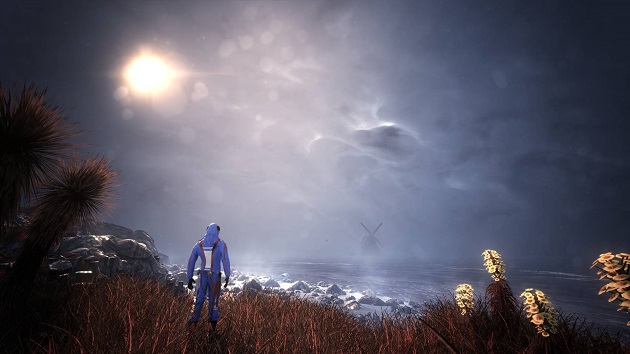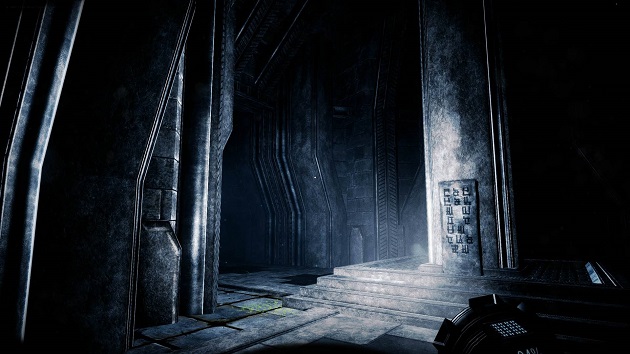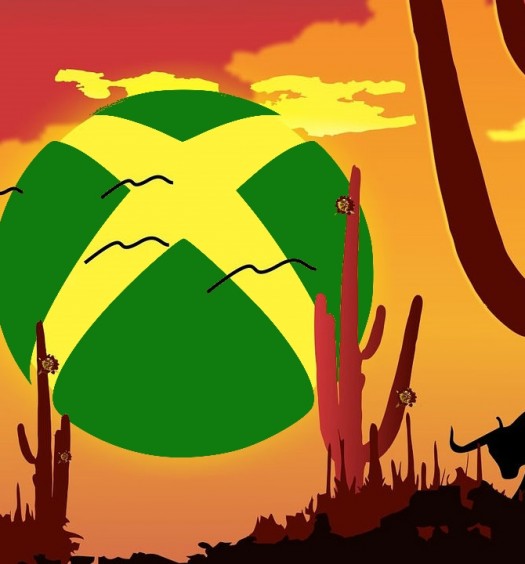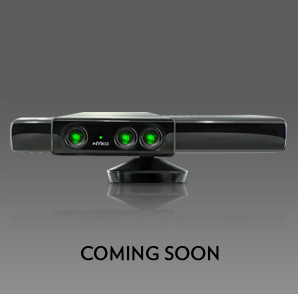“We want people to look at it and say, ‘OK, that’s something Activision could make,'” Grip Games CEO and co-founder Jakub Mikyska says of The Solus Project following a hands-on session with the game at E3.
It’s a lofty goal, and I’m not entirely sure it’s one the teams at Grip Games and co-developer Teotl Studios are pulling off. But The Solus Project certainly does not appear as an indie game. So while you’re unlikely to mistake it for something with the visual fidelity of Destiny or the next Call of Duty, the Unreal Engine 4-powered game at least looks like it’s slipped into that somewhat barren in-between category. The Solus Project‘s graphics make it look like a AA game. It’s something more technically impressive than what gamers are used to getting at ID@Xbox price points, but you’re unlikely to mistake it for the next Activision blockbuster.
The demo opens with us taking control of an astronaut stranded on a grassy beach with a rocky outcrop to one side and a body of water to the other. Straight forward it is, then. Mikyska tells me that players can pick up things in the environment, so I immediately try to grab every plant I see, but most aren’t pick-ups. Eventually I do come across some plants that can be picked up along with water, health packs, a flashlight and other goodies.
Intelligently managing and holding onto items will be important, since you’ll need resources to prevent dying of exposure, thirst or starvation. Your inventory will of course be limited to prevent stocking up on too many resources to easily overcome the game’s challenges.
“If you have an important item and you drop it somewhere and you need it, you have to go back and find it,” explains Mikyska. “It’s really a sort of hardcore experience. It’s not holding your hand, working you through the game. You really have to think while playing the game.”
Not so in the demo. A marker guides me toward the objective, but Mikyska says there will be no such guiding hand in the final game; players will have to find their own way in the world.
“There’s no dialogue,” notes Mikyska. “It’s really about going out there into the storm, and you die. But next time you will stay in shelter, and perhaps sleep for a few hours for the storm to pass and then you can explore again. So it’s really about thinking like a survivor, like an explorer in the wilderness.”
Sure enough, later in the approximately 10-minute demo the weather changes. The sun goes down, the temperature plummets and it begins to rain. Before long, a tornado forms in the distance. These effects are all scripted in the E3 demo, but Mikyska promises there will be a dynamic day/night and weather system in place for launch.
Before the weather takes a turn for the worst, I reach the marker and find a stone structure with a locked door. Naturally, finding the key is the next step. Again, a marker guides me along the beach to the key, which is conveniently resting on a stone pedestal as if intentionally placed their by someone for amateur explorers to find.
Back at the locked door, the key opens the way forward to…another locked door. This time the solution requires less legwork. A nearby skeleton has a lever sticking through his rib cage. Attaching it to a mechanism and pulling back gives the expected result. The demo ends as I step through the door.
Somewhere on the other side is what Mikyska describes as a narrative-driven exploration game. So while players won’t have their hands held, they won’t be spending their time aimlessly wandering about just to see what happens either. The Solus Project is exploration with purpose.
“There is a story that you follow. Basically the Earth is dying, and you’re sent to this planet because there’s something that could actually save Earth,” says Mikyska. “But you crash landed and instead of looking for a way out and to contact Earth, you explore the remnants of an alien civilization that was there and figure out why they were wiped out.”
He notes that after two years of development time the teams at Grip and Teotl want to “break above the indie crowd” with The Solus Project when it releases in early 2016. They will in all likelihood do so when it comes to graphical fidelity, as their game looks more like what you’d expect from a $35-$50 experience than a $30 or under one. But with exploration games like Abzu, No Man’s Sky and Adr1ft on the horizon, rising above the gameplay of their indie peers could prove an even tougher challenge to overcome.




